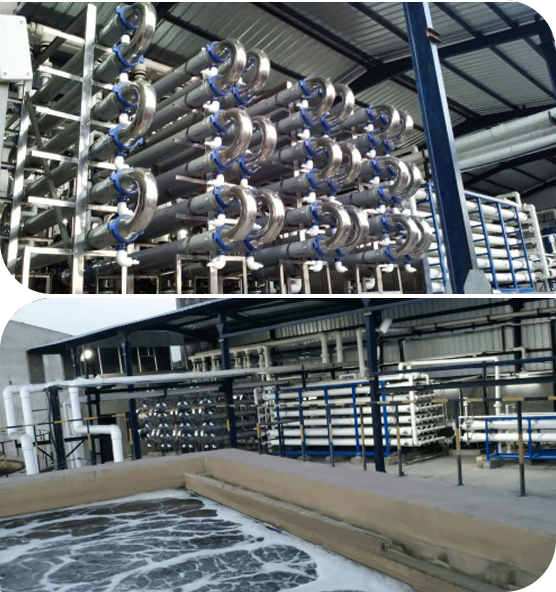
Waterman Engineers Australia has become the top makers of Zero Liquid Discharge process. A ZLD procedure is really a therapy procedure which can be employed to remove all of the liquid waste from the technique. The purpose of ZLD water treatment is to reduce wastewater economically and deliver potable drinking water that is certainly suit for regular use. Zero discharge system is a complicated remedy technique that comprises ultrafiltration, reverse osmosis, evaporation and fractional electro deionization. And we've been a very well-identified provider of ZLD programs.
In many Industries, which include electricity, oil & gas, chemical compounds, mining and Other individuals, a great deal of wastewater is generated that needs to be managed. Conventionally, this discharge of wastewater is done by means of a plant outfall to some floor water human body like an evaporation pond, or in some cases deep properly injected. These practices cause many environmental worries by the general public in many areas of the whole world, as water can be a scarce resource and its management needs to be monitored. These problems have resulted within the establishment of ZLD processes by quite a few industries to reduce their environmental footprint and improve sustainability. And, Waterman Engineers Australia are ideal ZLD suppliers you can find for this system.
Qualities OF ZERO LIQUID DISCHARGE Technique
The Houses of the Zero Liquid Discharge procedure can vary with regards to the precise structure and technologies employed. Even so, some widespread Houses of ZLD programs include things like:
Drinking water Conservation: One among the key goals of ZLD techniques is always to conserve h2o by reducing the discharge of liquid waste into the environment.
High H2o Purity: ZLD programs are created to generate higher-quality h2o that is certainly free of charge from impurities and contaminants, that makes them suited to use in many industrial procedures.
Versatility: ZLD systems in many cases are made to accommodate a broad selection of enter liquid streams, which makes them functional and ideal for use in various industries.
Superior Wastewater Treatment: Zero liquid discharge devices use Superior wastewater procedure ways to take out impurities and contaminants from your effluent, developing large-high-quality water.
Waste Reduction: ZLD units assist lower squander by decreasing the amount of liquid squander that should be disposed of and by producing a concentrated, reliable squander product that may be securely disposed of.
Electricity Performance: ZLD methods could be Electricity-intense due to the higher Strength necessities of evaporation and other wastewater therapy processes. Nevertheless, developments in technological innovation are generating Zero liquid discharge devices additional Electrical power-economical and price-productive.
Waterman Engineers Australia manufactures Zero Liquid Discharge (ZLD) devices built to take away all liquid waste, aiming to provide potable water and minimize environmental effects. Their ZLD units commonly incorporate ultrafiltration, reverse osmosis, evaporation, and fractional electro deionization. Essential technologies made use of are Slipping Film Brine Concentrators, Compelled Circulation Crystallizer, and Some others, using a two-stage means of pre-concentration and evaporation/crystallization to recover and reuse h2o. These techniques are adaptable to different industries, emphasizing h2o conservation, large h2o purity, waste reduction, and Electrical power effectiveness. Technical requirements are diverse and customizable, looking at variables like h2o supply, move charge, and feed h2o top quality.
The necessity for Zero Liquid Discharge (ZLD) methods arises from the necessity to handle environmental concerns connected with h2o scarcity and pollution. In industries like electricity, oil & fuel, and mining, huge amounts of wastewater are produced. Traditionally, this wastewater is discharged into bodies of water, triggering air pollution and depleting clean water assets. ZLD units aim to minimize these impacts by treating and recycling wastewater in the economic system, thereby conserving water, minimizing squander, and endorsing sustainability.
When considering the technical specifications of a Zero Liquid Discharge (ZLD) method, crucial factors to center on involve the h2o supply it can address, the procedure's move level, the standard of feed drinking water, the phases of remedy involved, the Restoration level of drinking water, approaches for concentrate disposal, supplies of construction, functioning disorders, and process automation and Management. These variables ensure the procedure's performance, sturdiness, and efficiency in managing and recycling industrial wastewater.
Zero Liquid Discharge (ZLD) vegetation provide Gains for instance drinking water conservation, squander reduction, and pollution avoidance, contributing to environmental sustainability. They're relevant in industries like electricity generation, oil and gasoline, chemical substances, and mining, where by they help in managing industrial wastewater proficiently, lowering the ecological footprint, and complying with demanding environmental rules. These systems are important in locations experiencing water scarcity and for industries aiming to Zld System Manufacturer Zero Liquid Discharge System boost their sustainability and operational performance.
FAQs for any Zero Liquid Discharge (ZLD) procedure usually handle its operational principles, Value-success, upkeep necessities, environmental impact, applicability across several industries, and regulatory compliance. These questions aid people understand the program's Added benefits, technological demands, and suitability for their certain wastewater management desires.
one. Zero Liquid Discharge (ZLD) is usually a wastewater therapy method intended to do away with all liquid squander.
two. The process's factors are affected by the particular industrial course of action, wastewater composition, and regulatory prerequisites.
three. Effluent procedure crops clear away pollutants from textile effluents to circumvent environmental contamination.
four. Strengths include things like drinking water conservation, pollution reduction, and regulatory compliance.
5. The goal is to attenuate environmental effects by recycling drinking water and minimizing waste.
six-nine. Effluent treatment method plants are stages in wastewater procedure: Key (Bodily separation), secondary (biological treatment), and tertiary (Highly developed cure).
10. Device functions contain filtration, sedimentation, Organic cure, and disinfection.
11. Restricting parameters are variables that have an effect on the treatment's performance, like pH and contaminant concentration.
twelve. Design and style considerations involve circulation price, effluent composition, and wished-for good quality of treated drinking water.